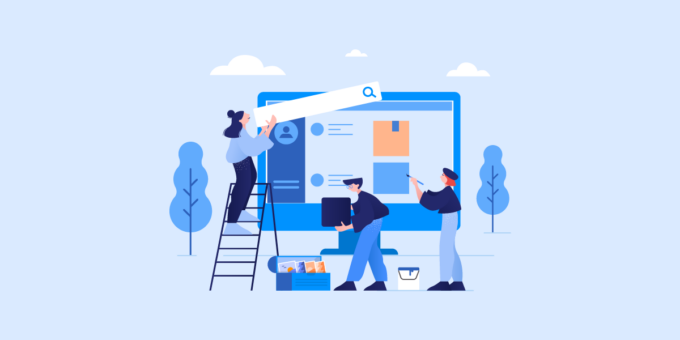A web application is a software program that runs on a web server and can be accessed through a web browser or a web-based interface. It is designed to provide functionality and services over the internet, allowing users to interact with the application using a web browser, instead of installing and running the application on their local device.
Web applications can be used to perform a wide range of tasks, including e-commerce, social networking, online banking, document management, and much more. They are often built using web technologies such as HTML, CSS, and JavaScript, and can be deployed on a variety of web servers and platforms.
Web applications can be either client-side or server-side. Client-side web applications run on the user’s device and communicate with a server to fetch data or perform actions, while server-side web applications run on a web server and handle all the processing and data storage on the server side. Some web applications may also use a combination of client-side and server-side technologies to provide a seamless user experience.
Web application development process

Source: nablasol.com
The development process for web applications can vary depending on the specific project, but generally involves the following steps:
- Planning and Analysis: This step involves defining the purpose and scope of the web application, identifying the target audience, and creating a list of features and requirements.
- Design: The design phase involves creating wireframes, mockups, and/or prototypes that represent the visual and functional aspects of the application.
- Development: In this phase, the application is built using web technologies such as HTML, CSS, and JavaScript on the client-side, and server-side technologies such as PHP, Ruby on Rails, or Node.js on the server-side. This phase includes developing the database schema, creating the application logic, and integrating third-party libraries or APIs.
- Testing: Testing the web application is an important step to ensure that it meets the requirements and is free of bugs or errors. This step can involve manual testing, automated testing, or a combination of both.
- Deployment: After the application has been thoroughly tested and any issues have been resolved, it is ready to be deployed to a web server or a cloud-based platform. This step includes setting up the server environment, configuring the database and other dependencies, and deploying the application files.
- Maintenance and Updates: Once the application is deployed, it will require ongoing maintenance and updates to ensure it remains secure, functional, and up-to-date with the latest technologies and features.
These steps are not necessarily sequential, and the development process can be iterative, with each step informing the next as the application is built and refined. Additionally, collaboration and communication among team members, stakeholders, and end-users is essential throughout the development process.
What do I have to prepare before the web application development process?

Source: designveloper.com
Before starting the web application development process, it’s important to prepare in the following ways:
- Define the purpose and scope of the web application: Determine what the application is meant to achieve, the problems it will solve, and the features it will offer.
- Conduct market research: Identify the target audience and competitors, and research their needs and preferences.
- Create a project plan: Develop a detailed plan that includes timelines, milestones, budget, and resources required for the project.
- Identify the technology stack: Determine the technology stack that will be used for building the application, including the programming languages, frameworks, libraries, and databases.
- Gather requirements: Create a list of functional and non-functional requirements for the application, based on the purpose and scope of the project.
- Create wireframes and mockups: Develop wireframes and mockups to visualize the application’s user interface and user experience.
- Plan for security and scalability: Plan for security measures to protect the application from potential vulnerabilities and attacks, and plan for scalability to ensure the application can handle increased traffic and usage.
- Identify and select the development team: Determine the roles and responsibilities of the development team members, and select a team that has the necessary skills and experience to execute the project.
By preparing adequately before the web application development process, you can increase the chances of success, reduce development time, and avoid potential issues or roadblocks along the way.
What is the price of web application development?

Source: scnsoft.com
The price of web application development can vary widely depending on a number of factors, including the complexity of the project, the technology stack, the level of customization required, and the location and expertise of the development team. In general, web application development can cost anywhere from a few thousand dollars for a simple project to tens or even hundreds of thousands of dollars for a more complex or customized application.
Here are some factors that can impact the cost of web application development:
- Features and complexity: The more complex the web application is and the more features it has, the more time and effort it will take to develop, test, and deploy it, and the more expensive it will be.
- Technology stack: The cost of web application development can also depend on the technology stack used. For example, a web application built using modern technologies like React.js or Node.js may cost more than one built using more traditional technologies.
- Customization: The level of customization required can also impact the cost of web application development. If the application requires a high level of customization or integration with other systems, it will likely be more expensive.
- Location and expertise: The cost of web application development can also vary depending on the location of the development team and their level of expertise. In general, development teams in more expensive locations and with higher levels of expertise will command higher rates.
It’s important to get a detailed quote and scope of work from potential development partners to understand the specific cost of your project. It’s also important to consider the long-term value of the web application and how it will benefit your business.
Who can help me with web application development in London?

Source: appinventiv.com
There are many web development companies and agencies in London that can help you with web application development. Here are some options to consider:
- Pineparks.com: A web development and mobile app development agency that specializes in bespoke website design, web application development, and e-commerce.
- Appsquare: A web and mobile app development company that offers custom software development, digital product design, and cloud computing services.
- Netguru: A digital agency that provides web and mobile development services, including product design, custom software development, and DevOps.
- Red C: A digital agency that offers web and mobile app development, UX/UI design, and digital marketing services.
- UXB London: A user experience design and development agency that specializes in creating user-centered web and mobile applications.
These are just a few of the many options available in London. When choosing a web development partner, it’s important to consider factors such as their expertise, experience, portfolio, and reviews from previous clients.







